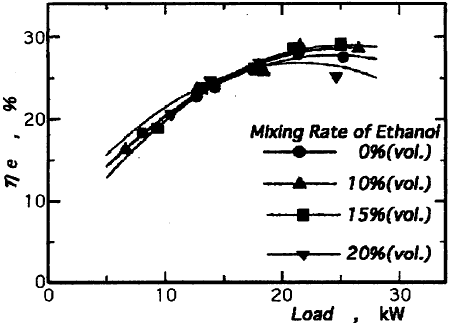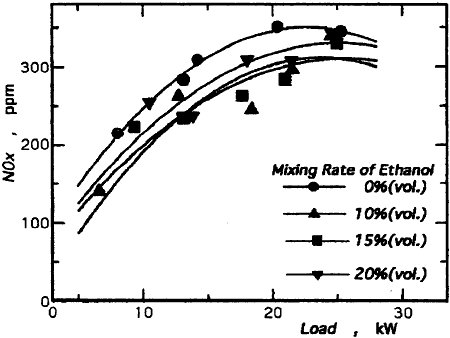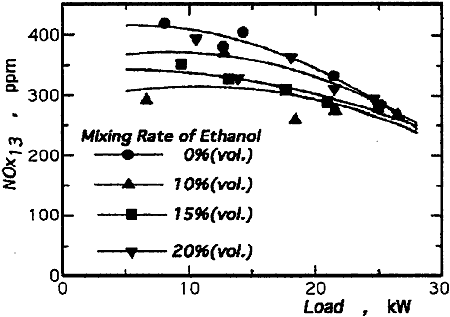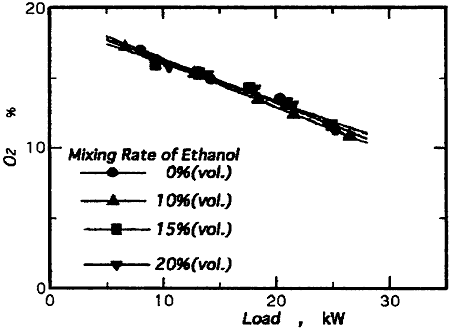
Fig. 3 Effective Thermal Efficiencies of D.E. by using of Ethanol Blended Fuels
Measured NOx of each mixed fuel is shown in Fig.4.
NOx in exhaust emissions becomes lower in increasing in the mixing rate of ethanol for every load condition. It is considered that higher latent heat and lower caloric heat of ethanol causes the lower combustion temperature thus the NOx becomes lower. Here, in cases of 10% (vol.) and 15% (vol.) mixing rate of ethanol have almost the same NOx emission. It is also deduced that the excessive mixing rate dose rot reduce NOx from exhaust emissions.

Fig. 4 NOx Density of Exhaust Gas
Figure 5 shows the corrected NOx concentration at 13%O2 in exhaust gas. This concentration intends to compare NOx amount at the same air diluted level. In comparison with the case of pure diesel fuel oil, 10% (vol.) mixed case shows the most effective in NOx and 15% (vol.) case, 20% (vol.) case follows it. It is suggested that the corrected NOx concentration becomes larger with mixing rate due to the higher fuel consumption. If we consider this aspect, NOx will be lower in Fig. 5.

Fig. 5 Corrected NOx Density at O2 13%
Residual O2 concentration in exhaust emissions is shown in Fig.6. There is no significant difference in each case. Fuel consumption becomes larger in case of higher ethanol mixing rate to cover the lower heating value. It is suggested that the contained oxygen in ethanol fuel brings the same level of residual O2 density.

Fig. 6 O2 Density of Exhaust Gas
CO2 concentration in exhaust emissions is shown in Fig. 7. CO2 does not change largely with variation in the blended ethanol rate. It is considered that the less in carbon molecular for ethanol makes it possible to keep the CO2 concentration constant with increase of fuel consumption.
BACK CONTENTS NEXT